The Trek Fuel EX 8 Gen 6 is part of the sixth generation of the US brand’s flagship trail-bike family, launched in 2022. It went live hot on the heels of the aesthetically similar, but motor-assisted Fuel EXe bike.
The Fuel EX family offers 140mm of rear-wheel travel, paired with 150mm forks, and is targeted at more aggressive trail bike riders. The bulk of the bikes are offered with 29in wheels, the XS frames have 27.5in wheels, while those looking at size-small bikes get the pick of both sizes.
One of the most adjustable bikes on the market, the Fuel EX offers two geometry adjustments, as well as suspension adaptability and mullet compatibility. With an expansive range, covering alloy and carbon models, there are bikes for many pockets.
This EX Gen 6 sits at the top end of the alloy range, and while the spec list isn’t dripping in top-end kit, the selection of parts suggests solid performance should be expected.
Trek Fuel EX 8 Gen 6 frame and suspension
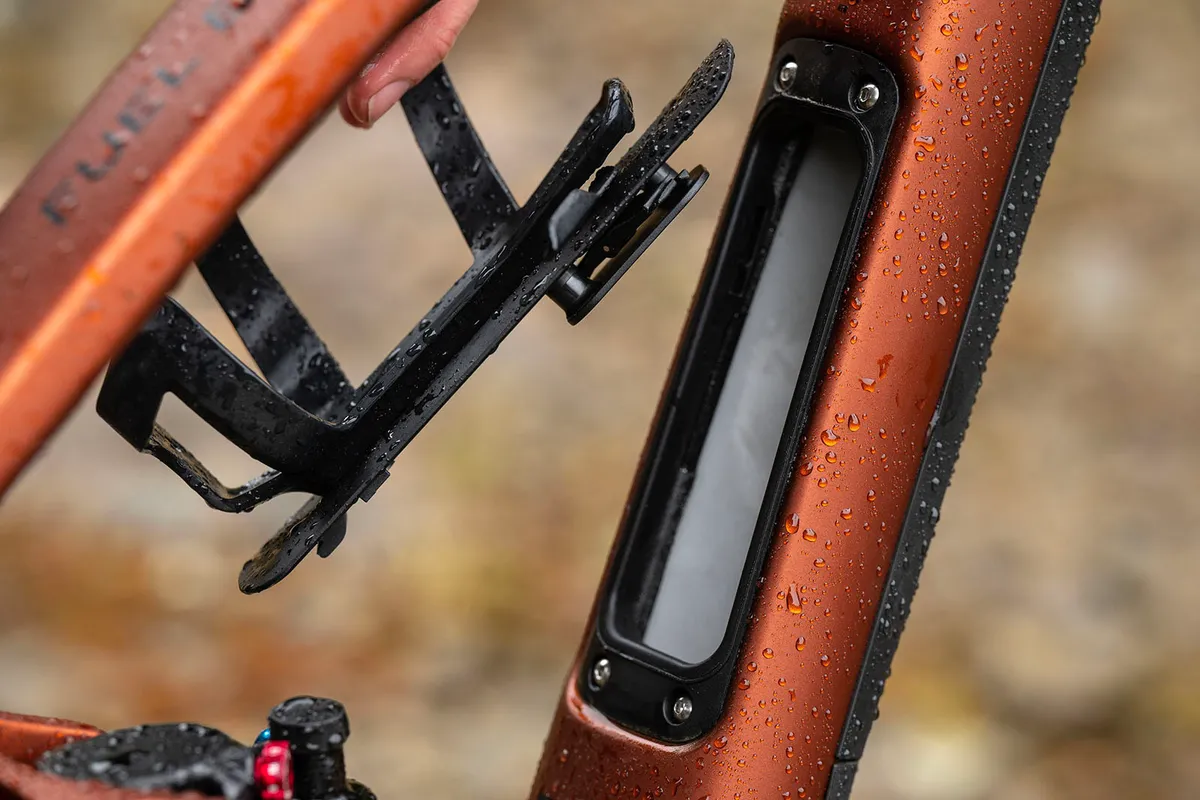
The frame uses Trek's Alpha Platinum aluminium, which is butted and hydroformed into the tube shapes the brand desires.
The down tube features a storage port, into which tools, snacks or pumps can be stashed, situated under the bottle cage.
Under the tube is a two-piece rubberised bolt-on protection strip to keep the frame safe. It extends the length of the down tube, which is great to see.
Threaded bottom bracket shells will appeal to home mechanics, while there are ISCG05 mounts around the shell too.
Thick rubberised protection keeps the rear triangle running quietly and the paint chip-free.
A wide 34.9mm seat tube means large-diameter droppers are fitted - a boon when it comes to durability.
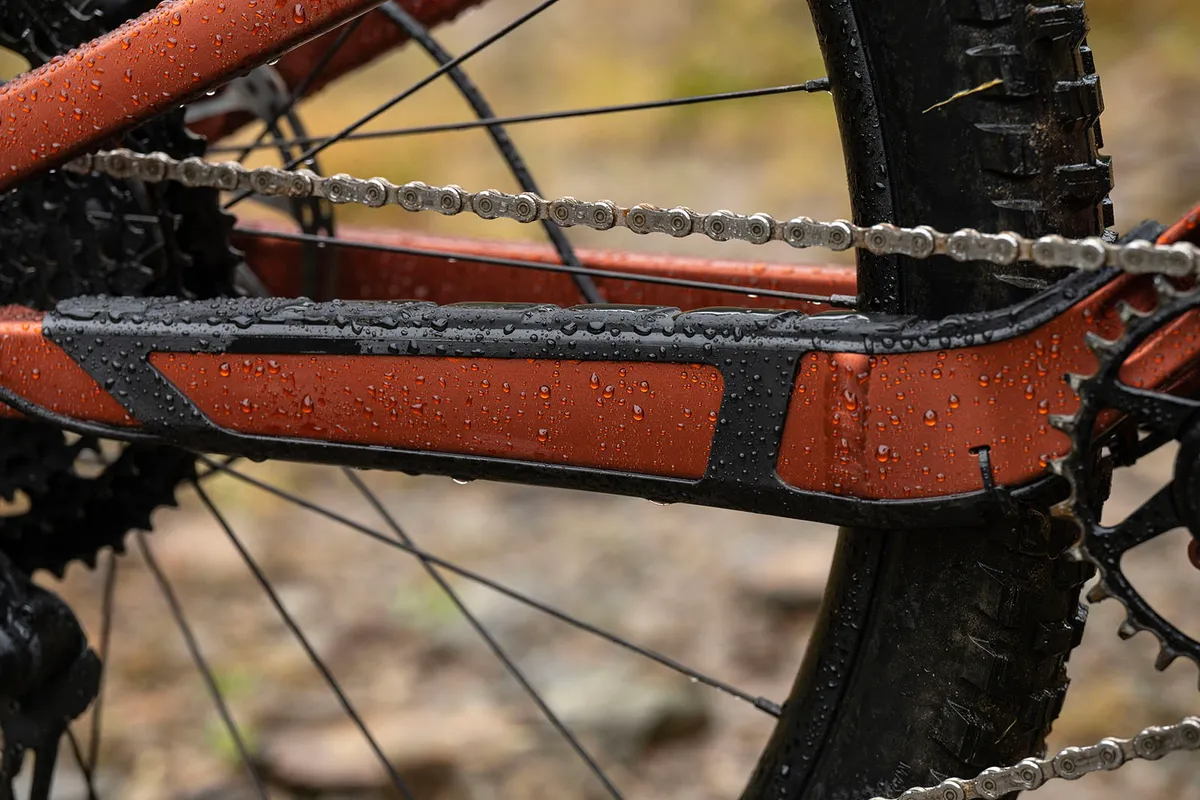
Trek uses its ABP (Active Braking Pivot) suspension linkage on the Fuel EX. This places the rear pivot concentric to the rear axle (rather than on the chainstay or seatstay, as on most suspension systems).
This, Trek says, separates braking forces from the suspension’s action. The idea is that suspension remains active while braking.
Normally, the torque applied to the seatstay by the brake during braking interferes with the suspension, hampering the wheel’s ability to track the ground while slowing down.
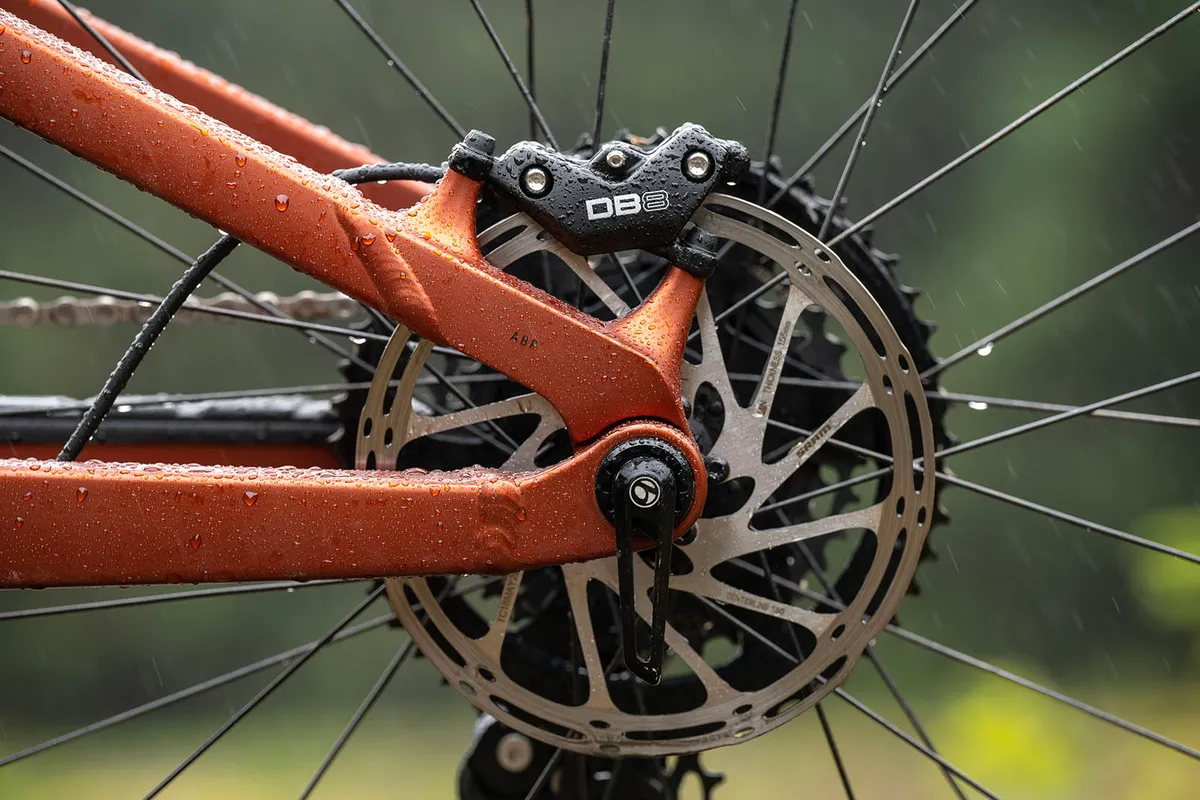
Trek says the seatstay, which floats between the rear pivot and the rocker link, separates the two competing forces.
The suspension linkage features a two-position lower shock mount on the frame (the ‘Progression Chip’), enabling you to run a more progressive leverage curve, offering improved bottom-out protection, or the ability to run a coil shock, which is more linear than a standard air shock.
This feature should appeal to more aggressive riders.
Trek Fuel EX 8 Gen 6 geometry
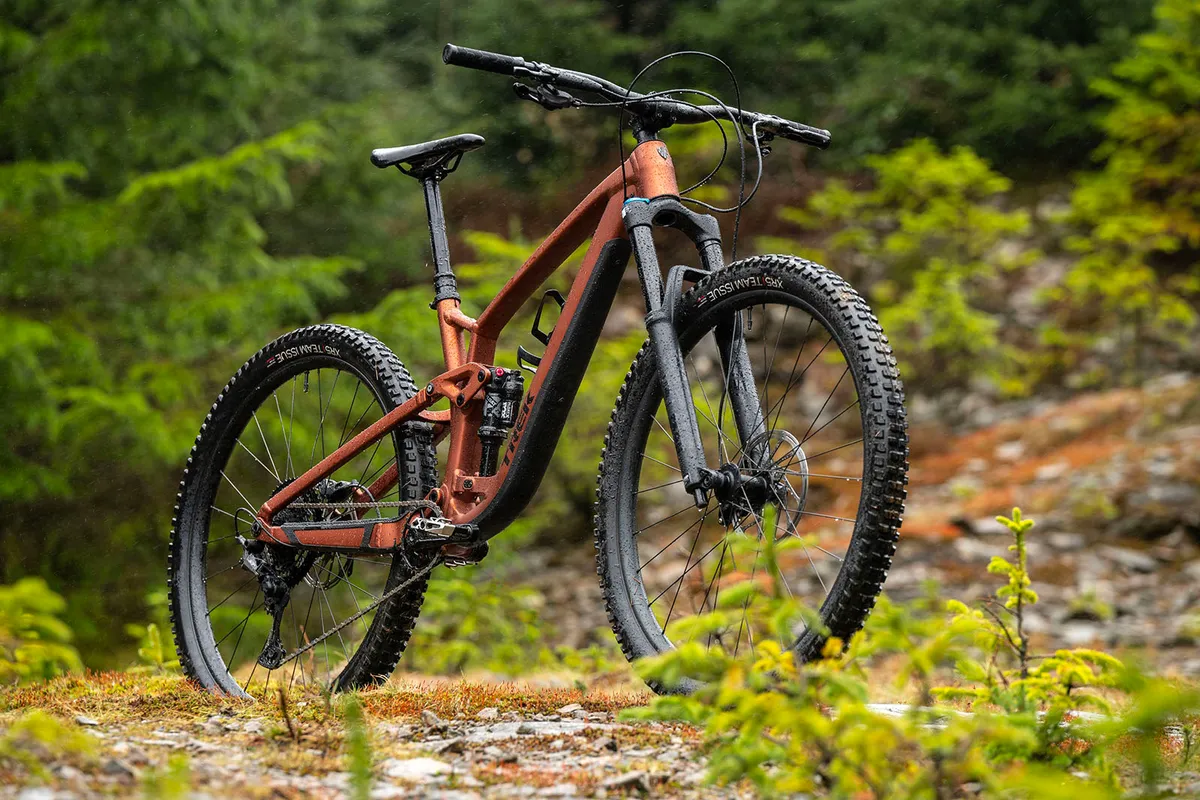
Trek has given the Fuel EX plenty of adjustability in terms of the bike’s geometry.
The MinoLink has been seen on numerous Trek bikes. This flip chip in the suspension rocker gives Low and High settings, altering head and seat angles by 0.5 degrees. It also alters the BB height by 8mm.
There are also three headset options – Slack, Neutral and Steep. In Slack (and MinoLink in Low), this offers adjustment from 63.5 degrees to 64.5 degrees (Neutral) up to 65.5 degrees in Steep. There's minimal impact on other areas of the bike's geometry.
Bikes ship with the Neutral headset (and the bike is tested here in Neutral), with a rotatable headset cup available aftermarket, offering the Slack and Steep options.
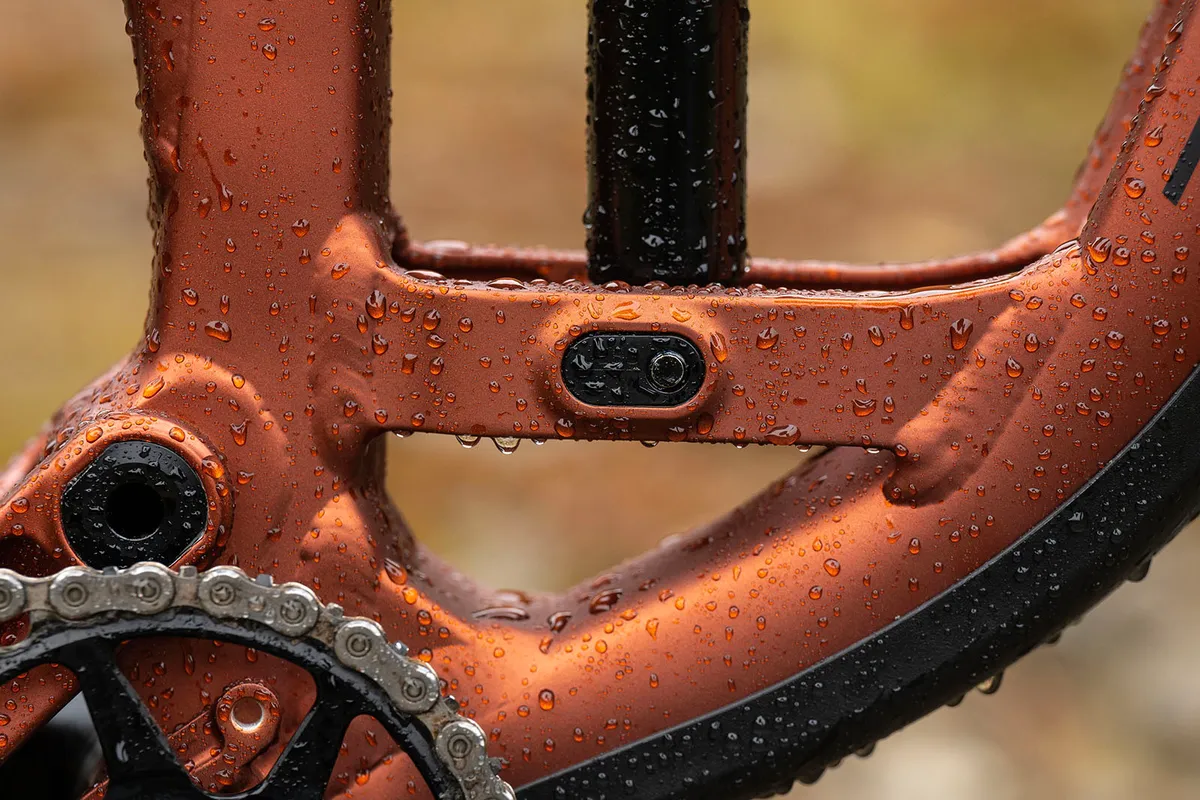
Finally, in terms of adjustability, if you stick the bike in the Steep setting with a 160mm fork, the Fuel EX can be run as a mullet bike, with a 27.5in wheel in the back.
Overall, the geometry is very modern. Reach figures are long, the head angles are slack and the seat tube angles are steep, at around 78 degrees.
Chainstay lengths alter with size, too, ranging from 435mm to 450mm across the (impressive) eight sizes on offer.
These go from XS to S (27.5 or 29in), Medium and Medium Large, Large, XL and XXL.
| | XS | S | S | M | ML | L | XL | XXL |
|---|---|---|---|---|---|---|---|---|
| Seat angle (degrees) | 70.8 | 70.8 | 70.8 | 70.8 | 70.8 | 70.8 | 70.8 | 70.8 |
| Seat angle - effective (degrees) | 78.6 | 78.2 | 78.6 | 78.2 | 77.5 | 77.2 | 76.6 | 76 |
| Head angle (degrees) | 64.5 | 64.5 | 64.5 | 64.5 | 64.5 | 64.5 | 64.5 | 64.5 |
| Chainstay (mm) | 435 | 435 | 435 | 435 | 440 | 440 | 445 | 450 |
| Seat tube (mm) | 360 | 380 | 380 | 410 | 420 | 435 | 470 | 500 |
| Top tube (mm) | 516.2 | 550.5 | 553.8 | 584.1 | 607.4 | 626.9 | 661.8 | 696.6 |
| Head tube (mm) | 95 | 95 | 95 | 100 | 100 | 105 | 120 | 135 |
| Fork offset (mm) | 44 | 44 | 44 | 44 | 44 | 44 | 44 | 44 |
| Trail (mm) | 121.6 | 121.6 | 129.2 | 129.2 | 129.2 | 129.3 | 129.3 | 129.3 |
| Bottom bracket drop (mm) | 25 | 25 | 38 | 38 | 38 | 38 | 38 | 38 |
| Bottom bracket height (mm) | 332 | 332 | 335 | 335 | 335 | 335 | 335 | 335 |
| Wheelbase (mm) | 1144.8 | 1174.8 | 1185.9 | 1213 | 1233.1 | 1250.2 | 1286.7 | 1323.2 |
| Standover (mm) | 716.8 | 723.8 | 736.8 | 736.8 | 741.8 | 747.8 | 766.8 | 773.8 |
| Stack (mm) | 574.1 | 574.1 | 612.3 | 616.8 | 616.8 | 621.3 | 634.9 | 648.4 |
| Reach (mm) | 400.2 | 430.2 | 425 | 450 | 470 | 485 | 515 | 545 |
| Wheel (in) | 27.5 | 27.5 | 29 | 29 | 29 | 29 | 29 | 29 |
Trek Fuel EX 8 Gen 6 specifications
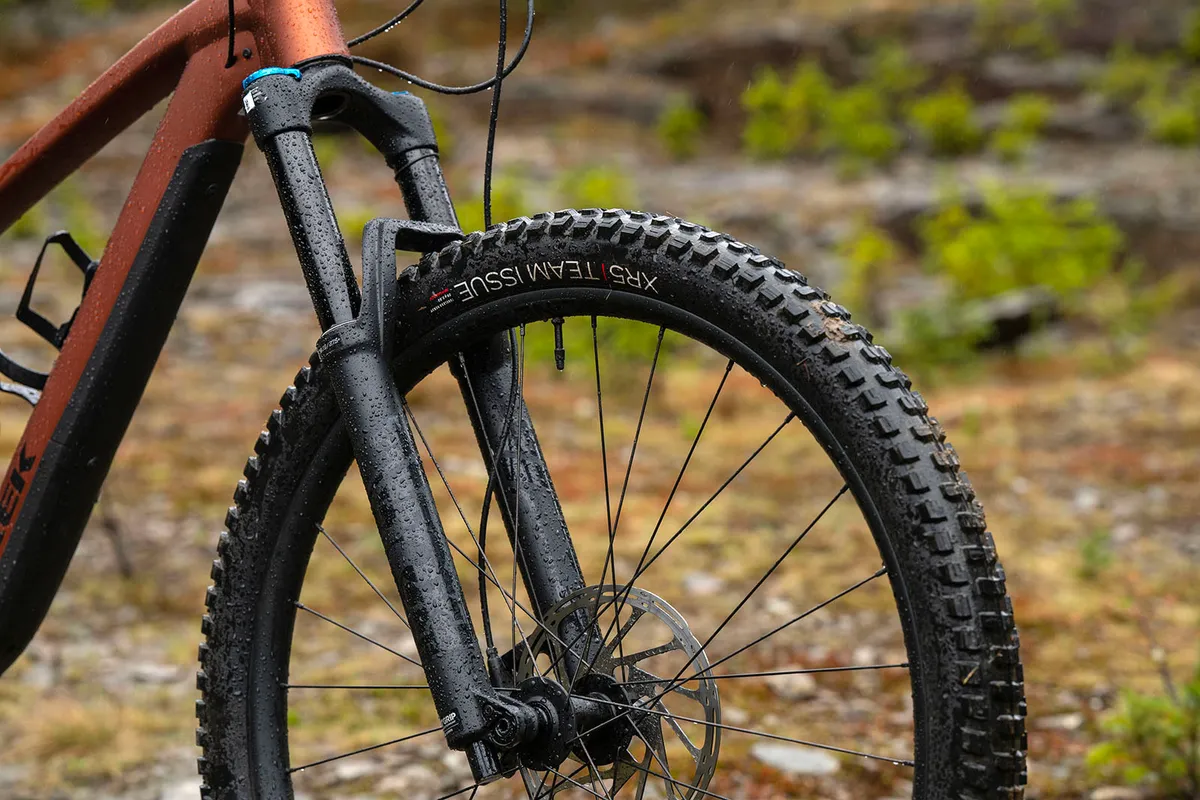
At £4,350, it’s fair to say the EX 8 doesn’t offer the best value around. However, many of the spec choices are solid, and the alloy chassis is great.
Suspension comes from Fox, in the shape of a Rhythm-level 36 fork with 150mm travel. This comes with the basic GRIP damper, which has a lockout dial on the top of the fork and low-speed rebound adjustment at the bottom.
At the rear, there’s a Float X shock, in its Performance flavour. This has a piggy-back design, giving it a higher oil volume, which in turn improves performance consistency on long descents.
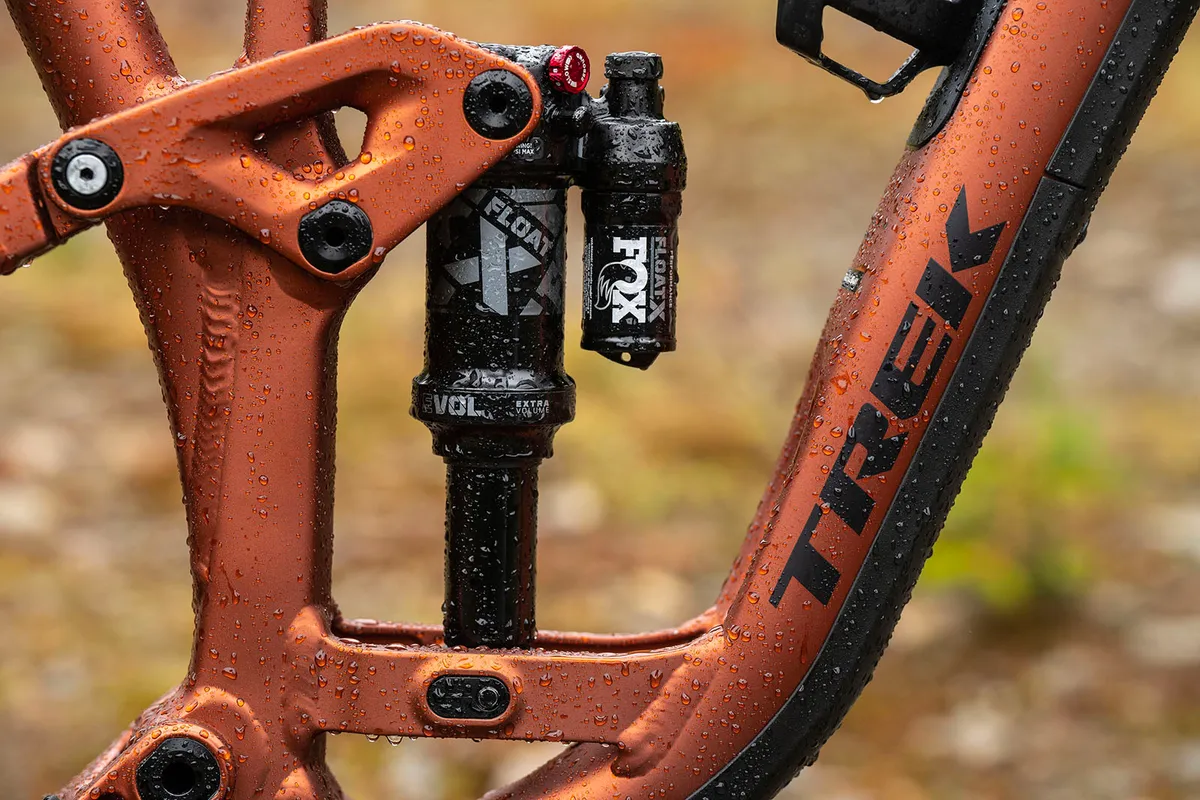
The Performance level largely means there’s less adjustment than its pricier siblings, but you still get a lockout lever.
The drivetrain is a mix of Shimano XT, SLX and Deore, as well as an e*thirteen 9-50t cassette. The brakes on my test bike are the new mineral-oil based DB8 brakes from SRAM, with 200/180mm rotors. Some bikes may come with M6100-level Shimano brakes, though.
Bontrager (Trek’s in-house parts brand), provides the bulk of the finishing kit, from the cockpit to the saddle, as well as its Line 30 Comp wheels, and mid-aggressiveness XR5 Team Issue 29x2.5in tyres.
Trek Fuel EX 8 Gen 6 ride impressions
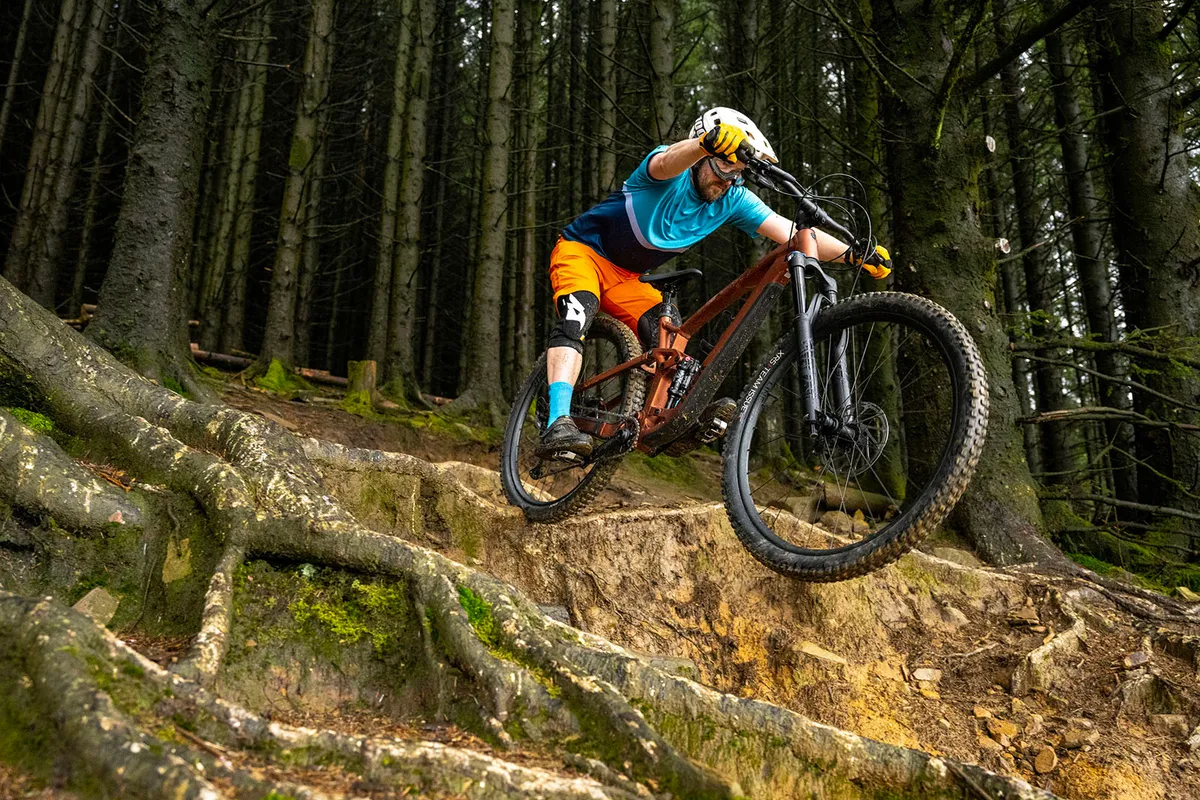
This bike was tested as part of our 2023 Bike of the Year test. It was compared to seven of the best trail bikes, listed later.
I took all the bikes to the same locations and trails for some dedicated back-to-back testing on a wide variety of terrain.
From hand-dug tracks in the woods to trail-centre laps and BikePark Wales’ rocky runs, I ensured the trail bikes were exposed to every type of trail such a bike is likely to be ridden on.
Riding the bikes back to back, usually with four in each testing session, ensured I was able to pick out the finer performance points of each one.
Trek Fuel EX 8 Gen 6 climbing performance
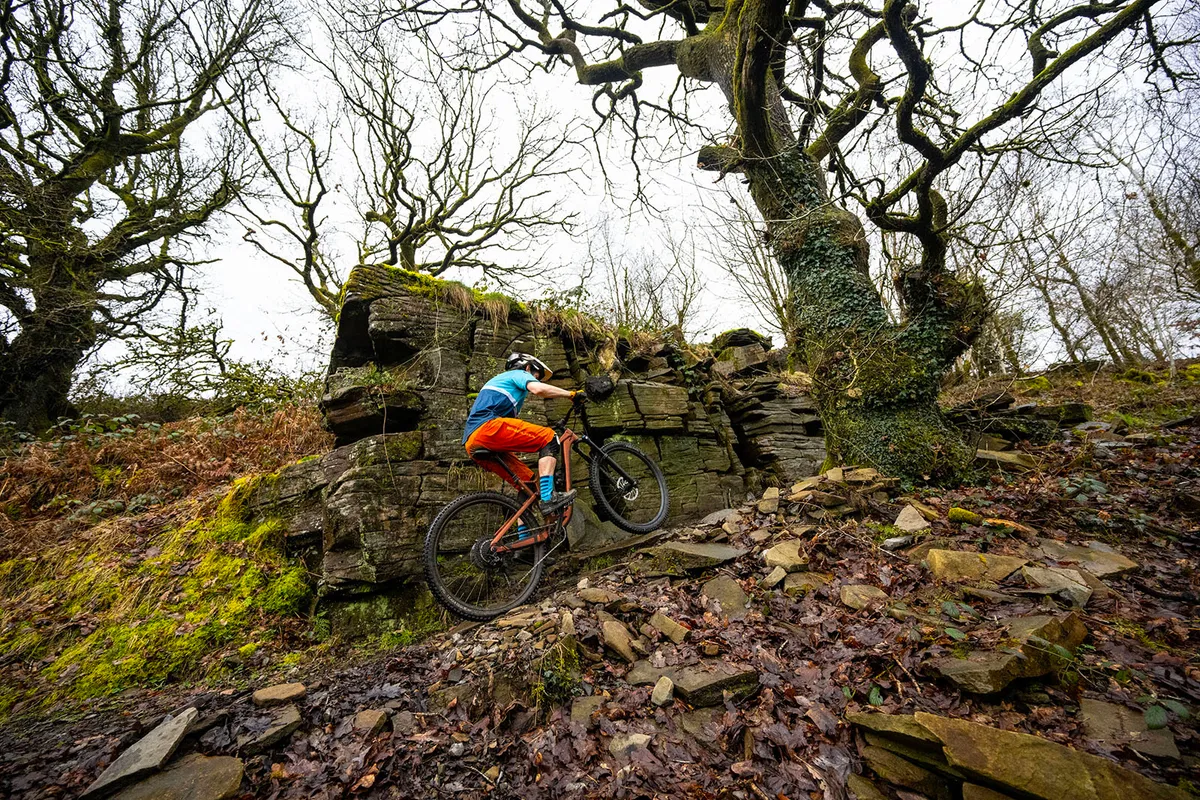
The Fuel EX does a solid job when the trails start to ascend.
The seated position is excellent, with a steep seat angle putting you right where you need to be over the cranks when the front wheel is higher than the rear.
When your weight shifts rearward, the suspension doesn’t seem to squat much, either, so the seat angle rarely dips from its steep position too much.
Seated, the suspension is as good as solid when pedalling, with minimal movement of the shock under regular pedalling loads, leading to an efficient feel. The SE5 tyres roll fairly fast, thanks to their low tread height.
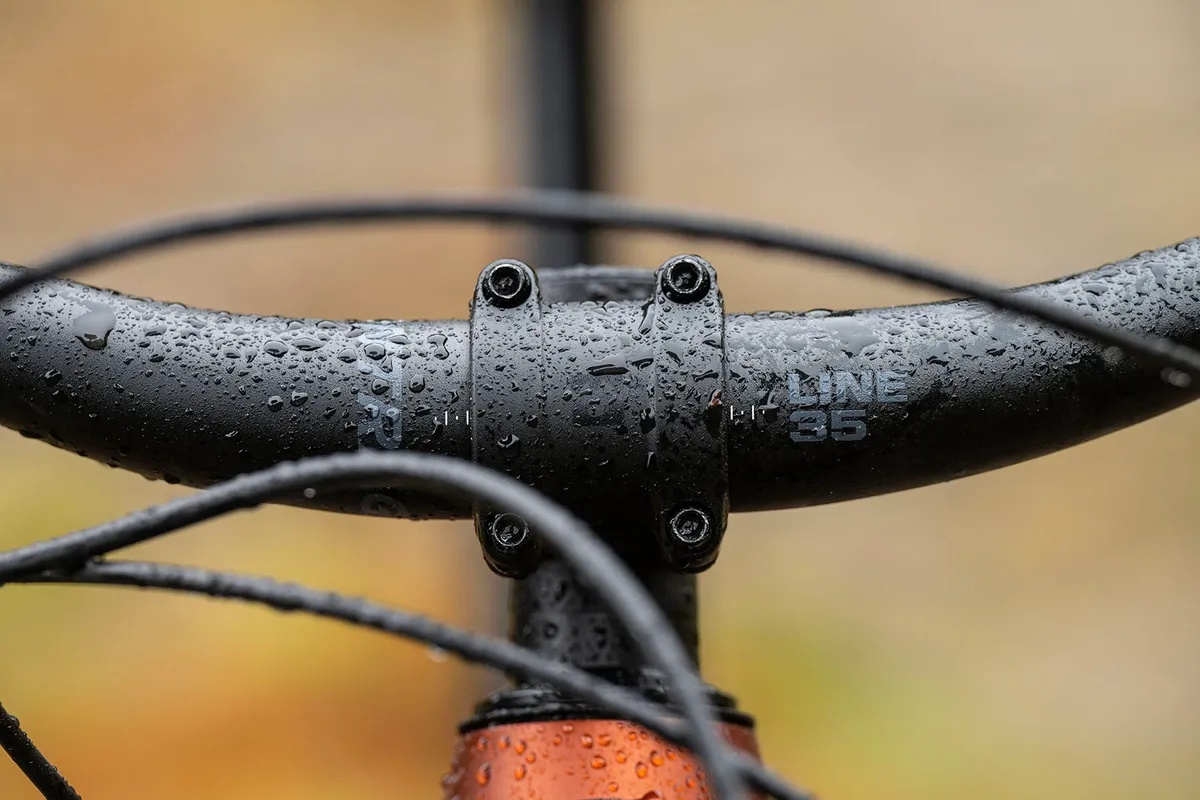
Stand up, and you can get the suspension bobbing about, but it doesn’t feel as wallowy as many in this situation, and the lockout lever is within easy reach on smoother drags.
Get to a step up in the trail and the suspension stays static as the rear wheel crests the ledge. Traction on slippery roots from the SE5 rubber could be better too – though the trade-off would likely be some rolling resistance.
When stood, you get the first impression that the chassis is stiff – there’s no spaghetti feeling as you put power through the cranks, and the whole setup feels, simply put, solid.
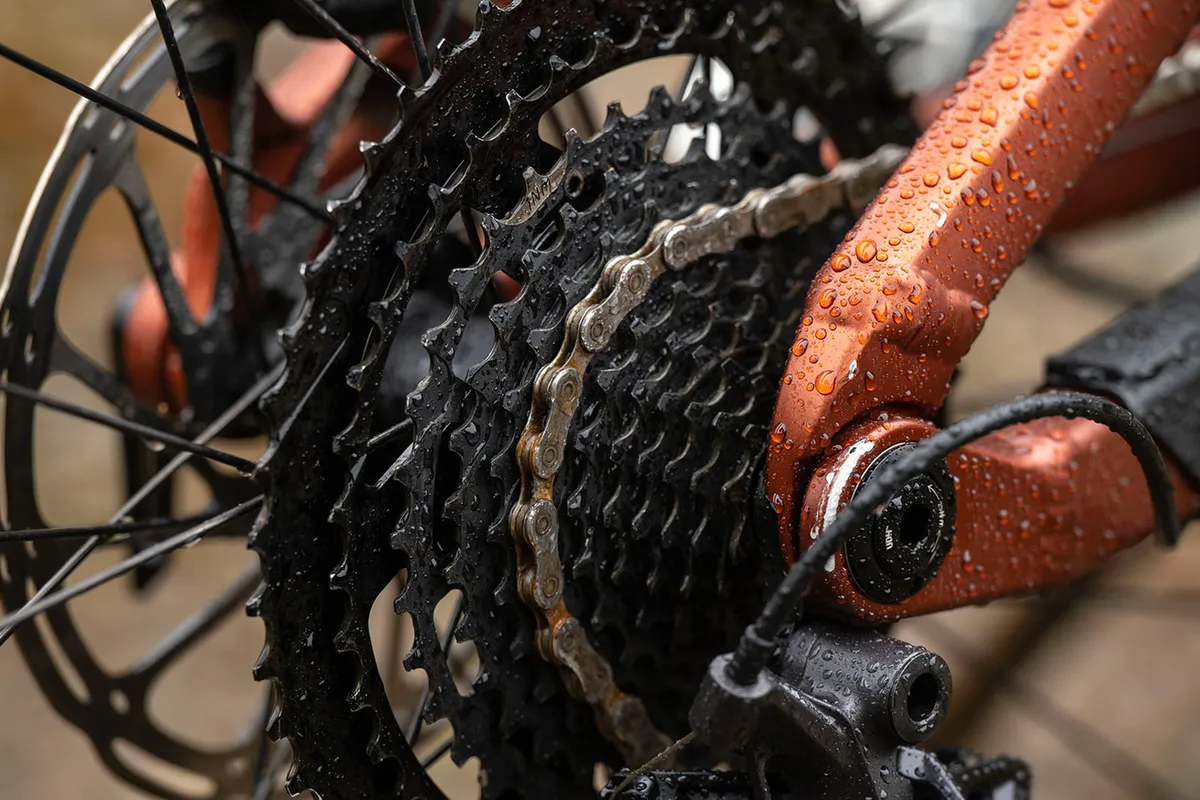
Despite all this, it’s not the fastest climbing bike ever. It has a reassuringly composed feel, rather than light and flighty, and during testing I never really felt myself being egged on to ramp up the watts to get up the hill faster. It’s a bit of a sit and spin bike.
The Shimano drivetrain is good, with Trek speccing a largely XT groupset. Cassette specs seem to vary, like the brakes, with e*thirteen (as I have) and Shimano SLX being listed.
The e*thirteen’s shifting performance isn’t quite as slick as a Shimano alternative in my experience, but does feel a little quieter when the drivetrain is covered in grit and grime, compared to Deore/SLX cassettes.
Trek Fuel EX 8 Gen 6 descending performance
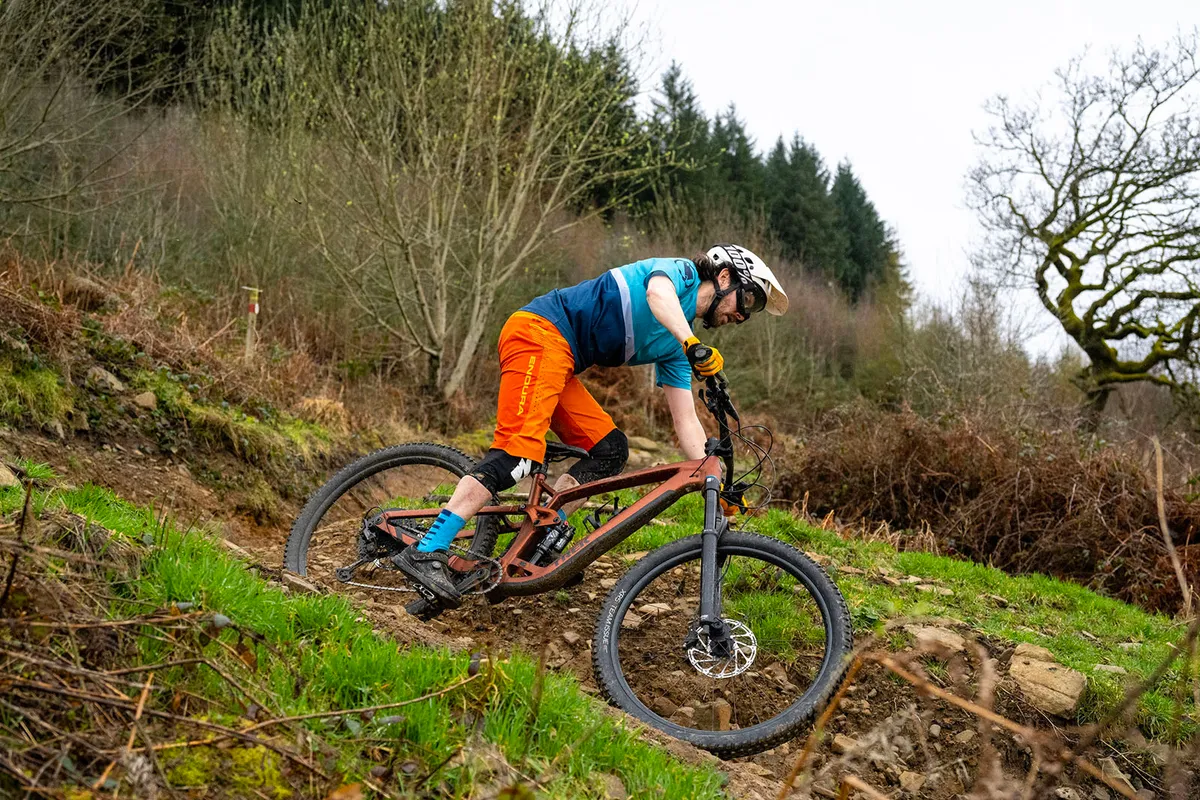
The solidity that was evident on the climbs is almost more so on descents. Trek has made a super-stout chassis that gives the Fuel EX an impressively composed feel on the trail.
It is almost unshakeable, pretty much regardless of the terrain.
The suspension doesn’t have a light, flighty feel, but is nicely damped, offering buckets of traction, whether you’re on the brakes or not, and provides ample isolation from the minutiae detail of the trail, without leaving you feeling entirely disconnected from it. Lighter riders may well find the shock over-damped.
On big hits, after a slightly harsh entry into its travel, the shock is controlled, with a smooth transition towards the bottom of its travel, avoiding any nasty clunks as the shock bottoms out. This is in the normal rather than more progressive shock setting too.
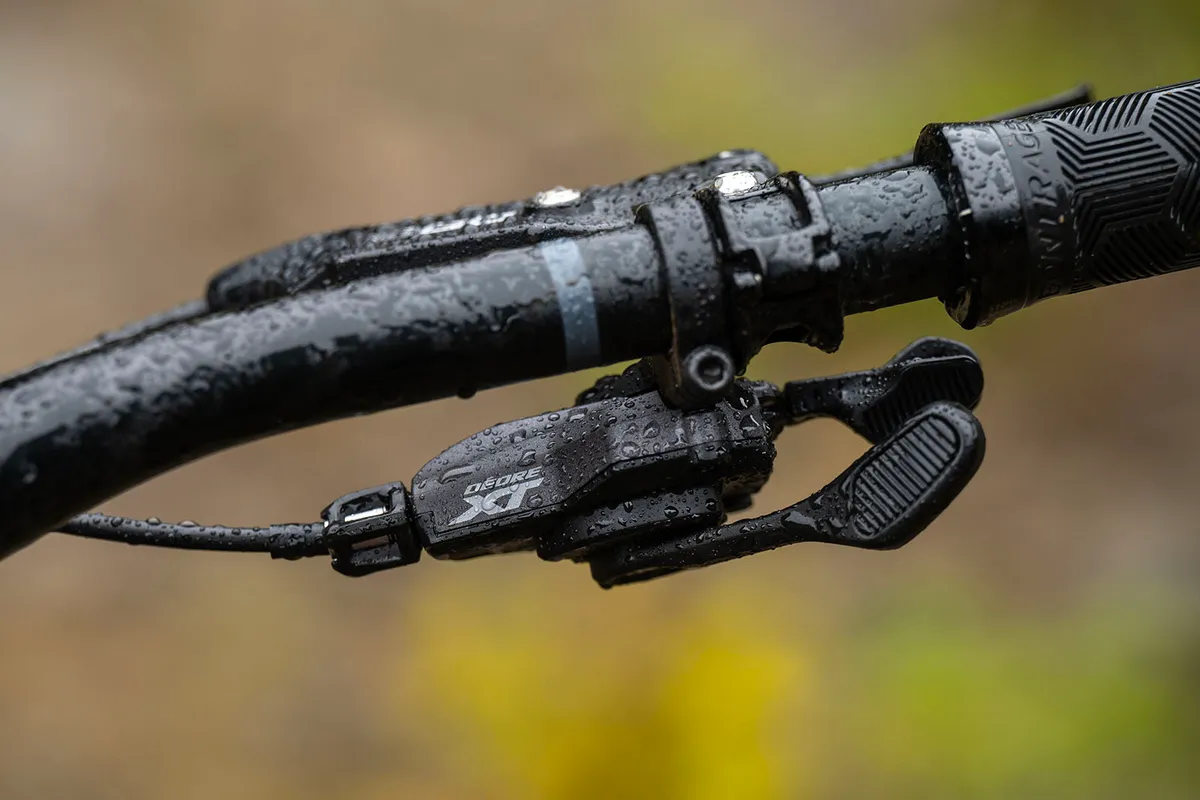
In this, I struggled to get through all the travel, suggesting it may well work better with a coil shock (which is, by its very nature, less progressive at the end of its stroke).
Drop the bike into a corner, and the chassis doesn’t flex, pushing your weight straight onto the tyre’s shoulder in a reassuring manner, and communicating exactly what’s happening through the rubber. It carves corners beautifully.
Fire it through some janky rocks, and the bike seems to shrug off any attempt to push it off-line and you into trouble. It doesn’t display full monster-truck tendencies, but it’s certainly a bike that feels happy being pointed somewhere in the distance and then allowed to get there in as straight a line as possible.
It’s a similar story on rolling trails, too. The suspension enables you to push and pump the bike through undulations, gathering speed, avoiding feeling like you’re trying to compress a marshmallow. Turn the pedals and you’re projected forward with ever-increasing speed.
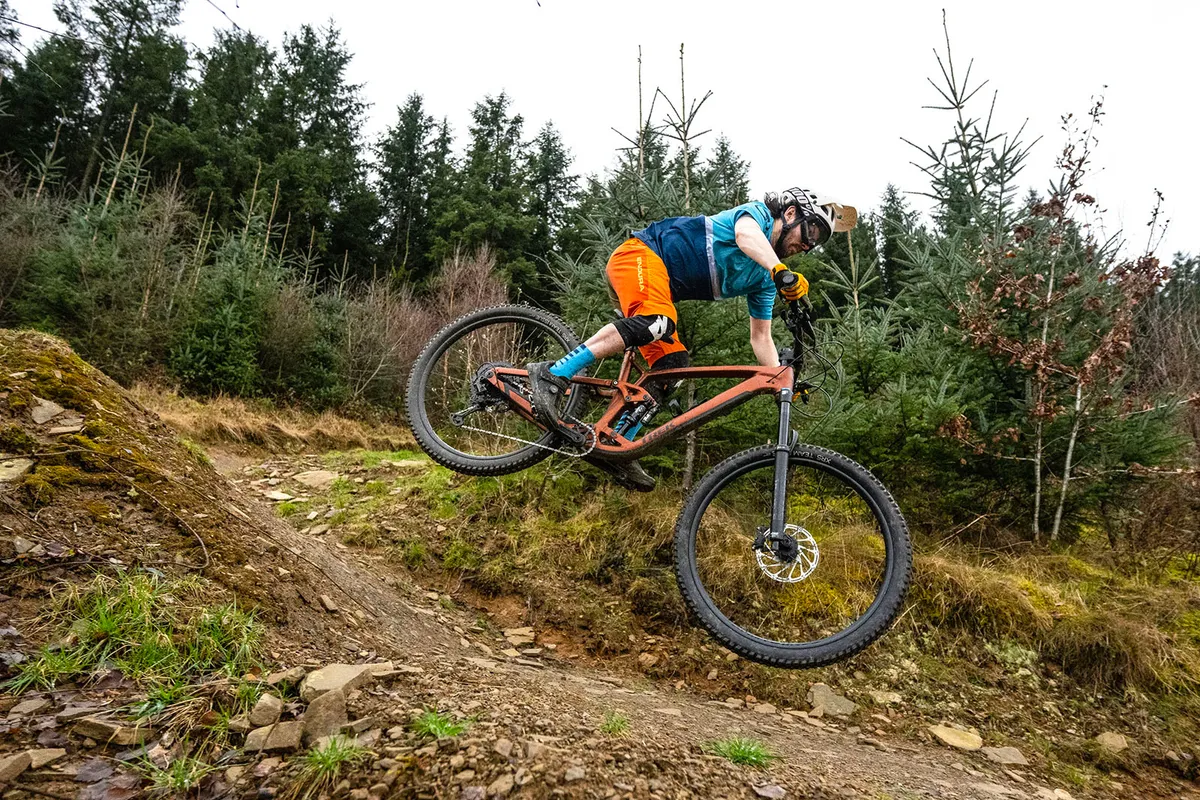
It even displays ample levels of agility, too – want to add a few air miles to your account? There’s support there to boost off a lip. Keen to whip the rear wheel round a tight bend? It’ll drop its shoulder and scrabble its rubber round when required.
With a 485mm reach (large) and 64.5-degree head angle, the Fuel EX should excel on steep tracks, especially because the Fox Rhythm 36 has a similarly stout chassis and ample support when needed.
However, you do need to trust both the brakes and the tyres in this situation.
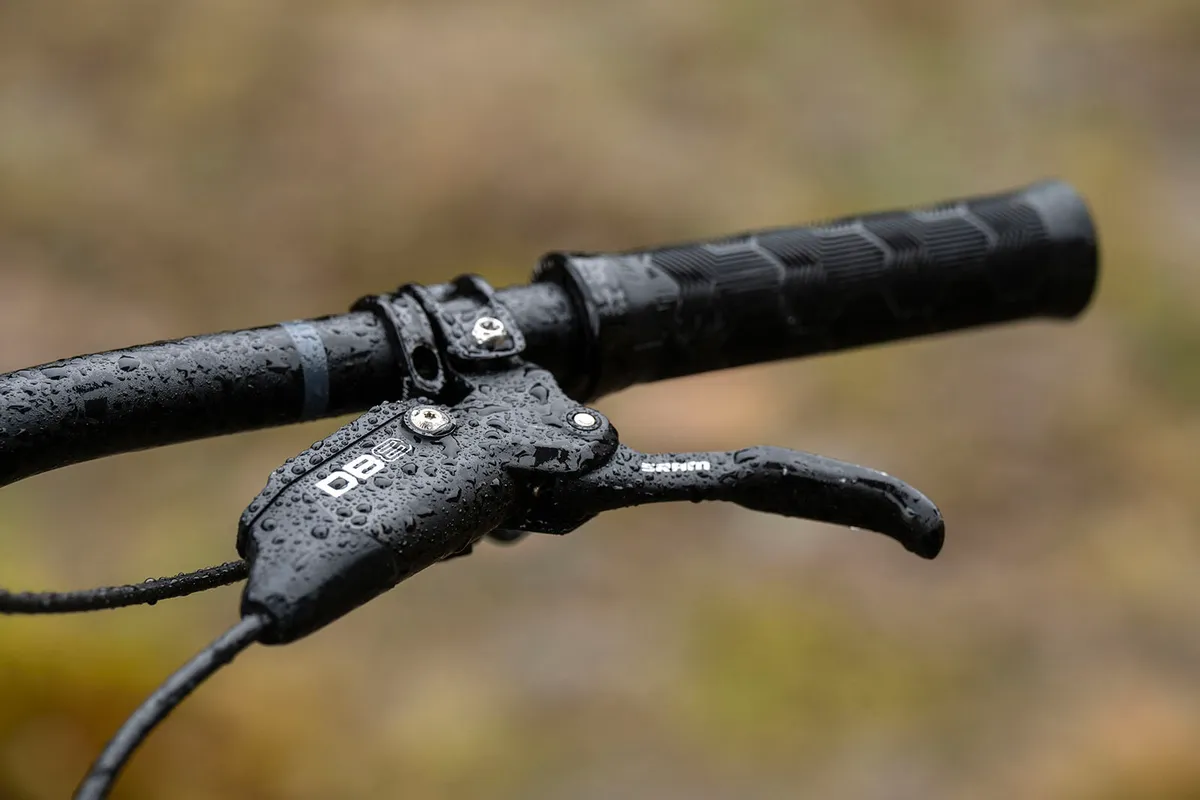
The new SRAM DB8 brakes didn’t impress me in testing. They feel wooden through the lever, with a disconnected lever feel, and their power levels are down on both the SRAM G2 and Shimano’s similar offerings.
Given Trek lists both the DB8 and Shimano M6100-series brakes on its spec list, given the choice, I’d opt for the Shimano stoppers.
While I’ve been relatively complimentary of the tyres so far, their performance is outshone by Maxxis tyres on other trail Bike of the Year bikes.
The tread depth is low, and so in sloppier conditions they don’t have the same bite. The slightly more rounded profile means the shoulder tread doesn’t engage the dirt as effectively as other tyres might.
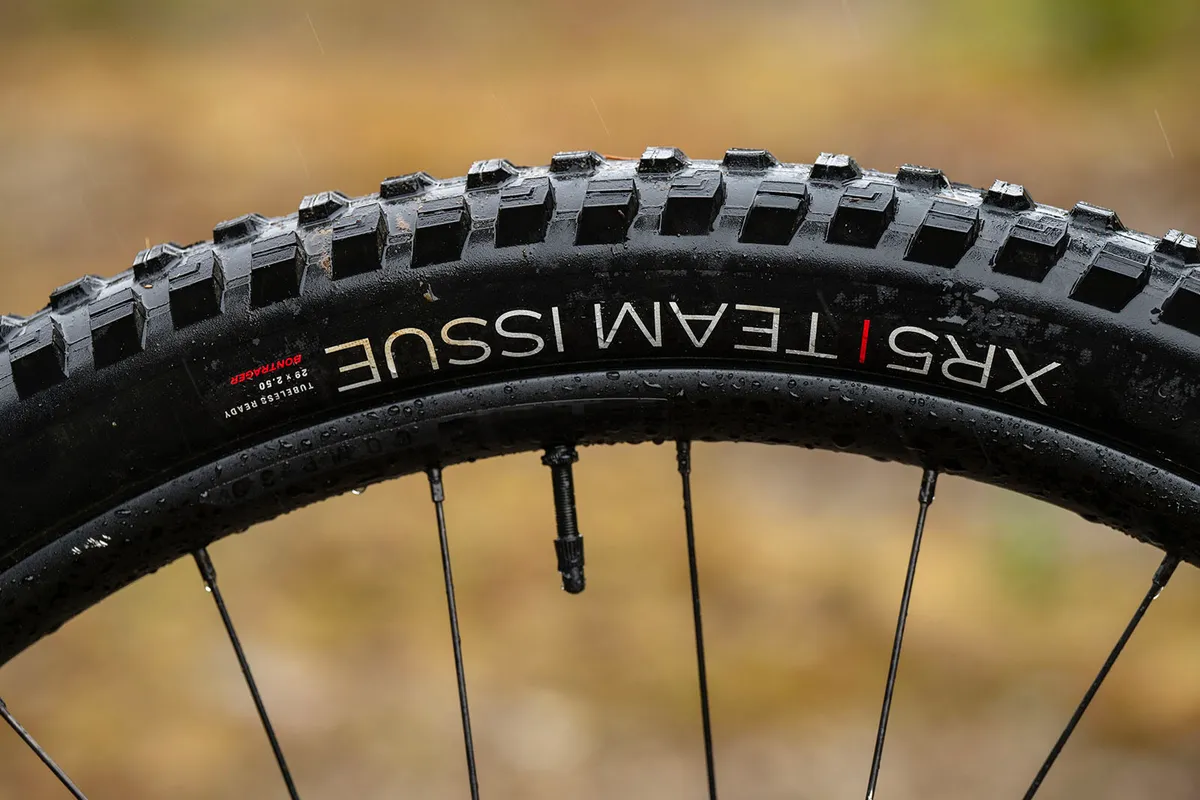
Compared to Maxxis’ 3C MaxxTerra rubber and EXO+ casing, these tyres can’t compete. They ping over rocks more and have less traction on damp rocks and roots.
Early testing on the loam, mud and roots of the forest left me impressed. But later trips to the high-frequency rocky chatter of BikePark Wales revealed the Trek’s other weaknesses – the stiff frame, Line 30 wheels and oversized bars.
These combined to transmit a whole lot of buzz straight to my hands. Add in under-powered brakes, and arm fatigue was an issue on prolonged rocky descents.
How does the Trek Fuel EX 8 Gen 6 compare to the Merida One-Forty 700?
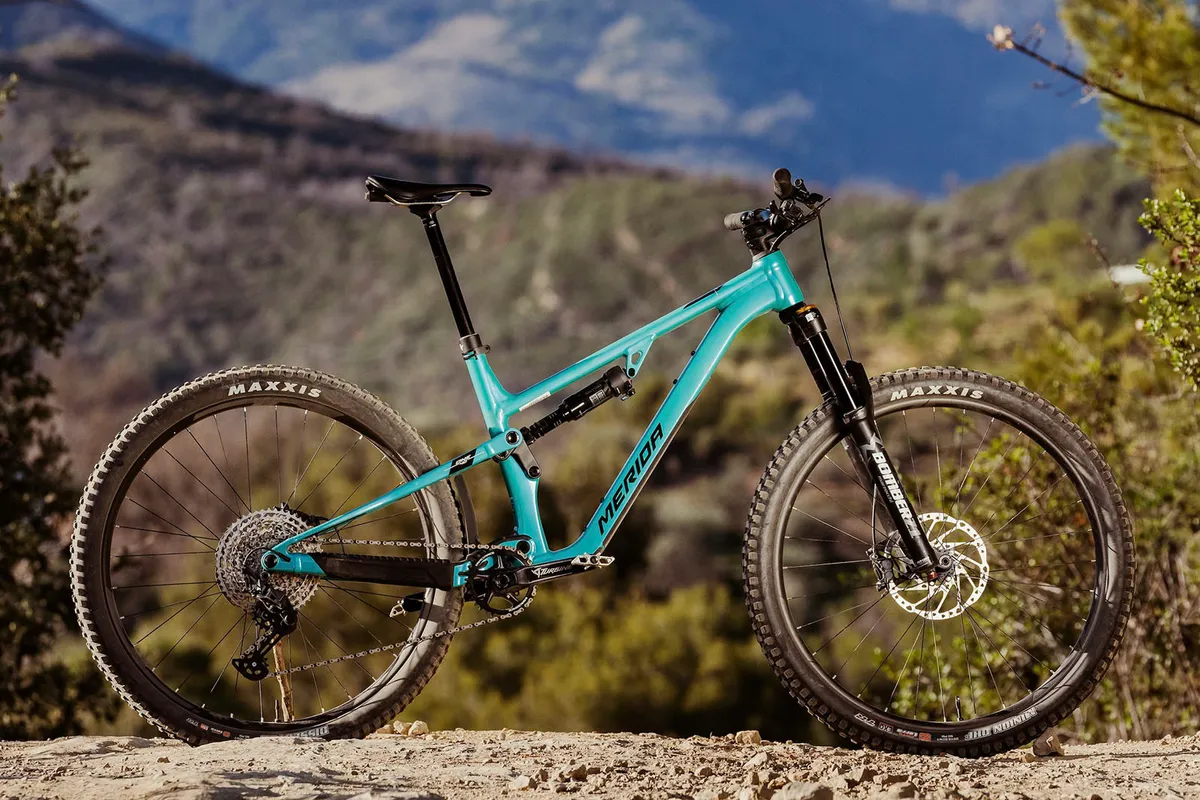
Trek and Merida each launched great new trail bikes in 2022. Both have clearly concentrated on the quality of their chassis, and target the trail rider who doesn’t want descending performance to be compromised.
The Trek has a very assured feel – it’s calm, composed and really easy to ride. It’s agile and communicative too.
The Merida (in the Long size that I tested) is radical in its shape, and climbs exceptionally well. It has a touch more pedal feedback, but both will tackle steep tech with ease.
Merida pips the Trek, though, thanks to its better tyres and cracking value for money. It’s over £1,000 cheaper, and other than the single-can shock, rather than piggyback, I can’t see where it loses out spec-wise.
Trek Fuel EX 8 Gen 6 bottom line
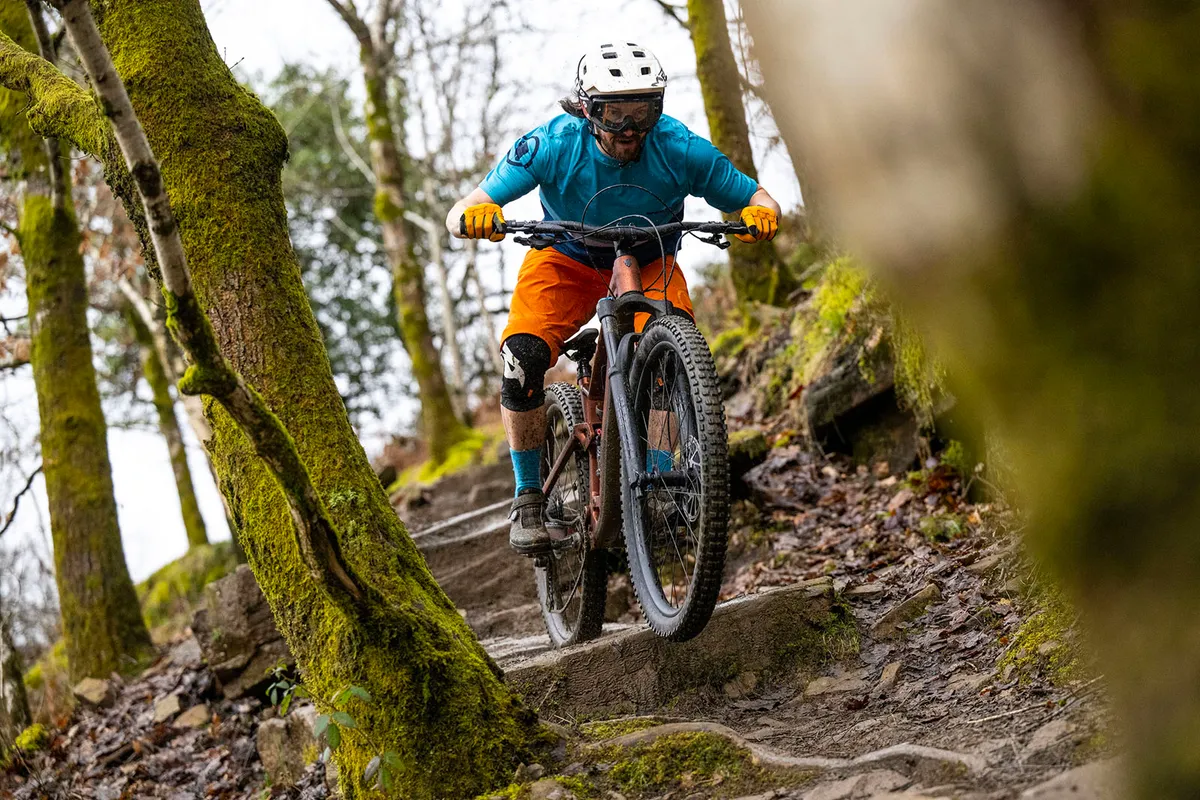
The Fuel EX is undoubtedly a great trail bike, and very nearly made it into my top three for this Bike of the Year category.
It was the rockiest tracks that separated the best from the rest, though, and the stiff front end, as well as questionable value, squeezed the Trek off the podium.
It’s a bike that best rewards an aggressive, rather than passive, riding style.
Treat it right (and maybe get lucky with the brake specs) and you won’t be disappointed by the Fuel EX.
Trail Bike of the Year 2023 | How we tested
This bike was ridden as part of our 2023 Bike of the Year test. It was compared to seven of the best trail bikes.
I took all the bikes to the same locations and trails for some dedicated back-to-back testing on a wide variety of terrain.
From hand-dug cheeky tracks in the woods to trail centre laps and Bike Park Wales' rocky runs, I ensured the bikes were exposed to every type of trail such a bike is likely to be ridden on.
Riding the bikes back to back, usually with four bikes in each testing session, ensured I was able to pick out the finer performance points of each one.
Our Trail Bike of the Year contenders
- Cannondale Habit Carbon 3
- Cotic Jeht Mullet Silver SLX
- Marin Rift Zone 27.5 XR
- Merida One-Forty 700
- Trek Fuel EX 8 Gen 6
- Vitus Escarpe 29 CRS
- Whyte T-140 RS 29
- YT Jeffsy Core 3
Thanks to...
Thanks to our sponsors Crankbrothers, FACOM Tools, MET helmets, Bluegrass Protection, Supernatural Dolceacqua, Le Shuttle and BikePark Wales for their support in making Bike of the Year happen.
Product
| Brand | trek |
| Price | 6200.00 AUD,4699.00 EUR,4350.00 GBP,4300.00 USD |
| Weight | 15.9000, KILOGRAM (L) - without pedals |
Features
| Fork | Fox Rhythm 36, 150mm travel |
| br_stem | Bontrager Elite, 45mm |
| br_chain | Shimano SLX |
| br_frame | Alpha Platinum Aluminium, 140mm travel |
| Tyres | Bontrager XR5 Team Issue 29x2.5 f/r |
| br_brakes | SRAM DB 8, 200/180mm rotors |
| br_cranks | Shimano Deore M6120, 30T |
| br_saddle | Bontrager Arvada |
| br_wheels | Bontrager Line Comp 30 |
| br_shifter | Shimano XT |
| br_cassette | eThirteen 9-50t |
| br_seatpost | TranzX JD-YSP39 |
| br_gripsTape | Bontrager XR Trail Elite |
| br_handlebar | Bontrager Line, 780mm |
| br_rearShock | Fox Performance Float X |
| br_bottomBracket | Shimano BB-MT501 BSA |
| br_availableSizes | XS, S, M, ML, L, XL, XXL |
| br_rearDerailleur | Shimano XT |
